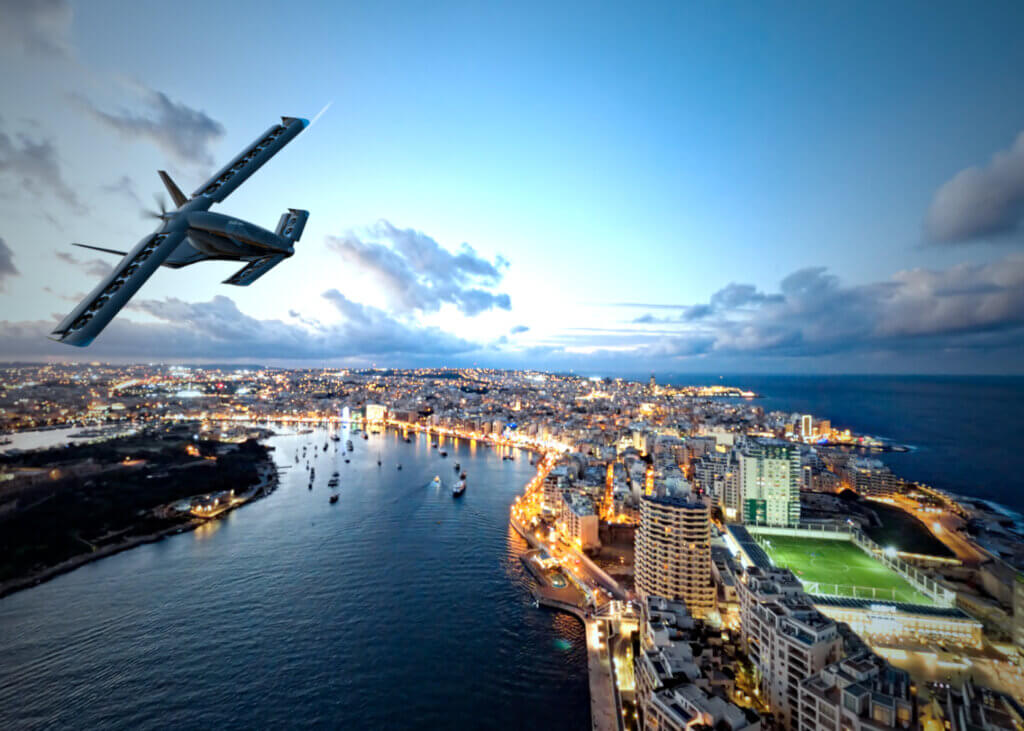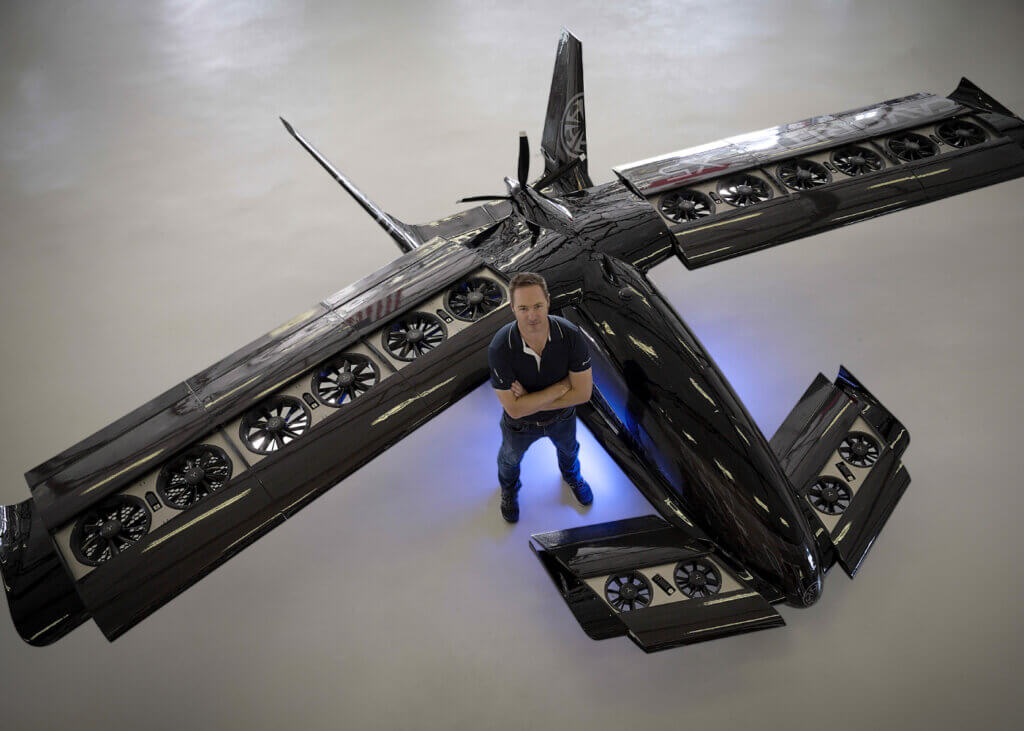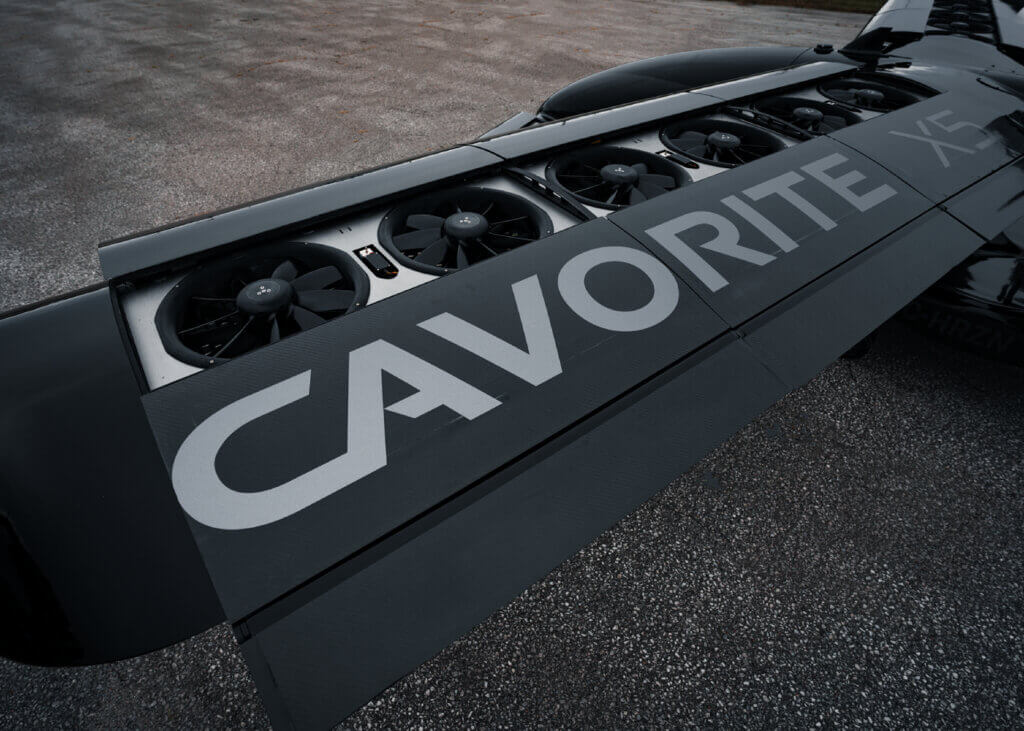With the significant price tag on designing, building, testing and certifying novel aircraft, eVTOL companies have gone to various measures to ensure regular cash flow to fund their programs.

Companies like Archer, Lilium, Joby, Vertical Aerospace and Eve Air Mobility all went public in 2021 and early 2022, seeing the benefits of new public funds injected into their programs — albeit not the full amount they were initially expecting.
In June 2021, Canada-based Horizon Aircraft joined that rank, after U.S. company Astro Aerospace acquired the small privately-held eVTOL developer.
“The Astro deal provided us with the capital to jumpstart our half-scale program,” said Brandon Robinson, CEO and founder of Horizon.
Founded in 2013, Horizon initially began working on a prototype design for an amphibious X3 eSTOL aircraft. The company later pivoted to eVTOLs in 2019 “based on investor interest and what was now possible with emerging electric and hybrid-electric technologies,” Robinson said.
That’s when the Cavorite X5 program began, envisioned to become a hybrid-electric VTOL intended for long-range regional air mobility trips and other traditional helicopter missions that don’t require high duration hovers.

But Robinson said it was the acquisition by Astro in 2021 that truly accelerated development work on the Cavorite X5 hybrid eVTOL. Despite having its aircraft design share the attention with Astro’s other Elroy and Alta eVTOL concepts, the Cavorite X5 received the funds it needed to build its half-scale demonstrator.
“A half-scale is a large enough aircraft to get some very useful aerodynamic data and properly prove the potential of a design that is incredibly unique in a busy market space,” he added.
But in a turn of events that culminated exactly a year later, Horizon cut ties with Astro, separating itself from the U.S. company amidst Astro’s questionable tactics to bolster its image and boost its stocks.
To appease its own investors who still supported the Cavorite X5 program, Horizon bought back most of Astro’s equity in the company “in a mutually acceptable transaction,” Robinson said.
“Overwhelmingly, investors were much more interested in our aircraft,” Robinson said, and the split from Astro in June 2022 “fundamentally came down to an alignment in terms of priorities and business ethics.”

Astro, however, remains a strategic investor in Horizon, retaining a “very small” percentage of its capitalization table, he said.
“We’re much happier now,” Robinson said. “We are once again a Canadian-controlled private corporation with leadership that understands what we’re doing, [and] we have made some truly incredible progress over the last year.”
Horizon designed its Cavorite X5 as a piloted, four-passenger hybrid-electric aircraft, with top speeds of 450 kilometers an hour (250 knots) and a range of 500 kilometers (270 nautical miles). It will have a useful load of 500 kilograms (1,100 pounds).
With those specs, Robinson admitted the Cavorite X5 will be a “power-hungry aircraft” in hover that will need a battery system with high power density. But with a turbogenerator in the aircraft, the Cavorite X5 will be able to recharge its batteries inflight, significantly extending its range compared with all-electric aircraft, the company claims.
Similar to other winged eVTOL designs, after the aircraft takes off, the Cavorite X5 will fly in traditional airplane mode for 98% of the mission.

“Initially, it’ll be a VFR — visual flight rules — aircraft, but it’ll be set up completely for instrument operations as well,” he said. “Any aircraft that wants to operate practically in a demanding air environment has to be set up for instrument flight operations. For example, all necessary systems will be in place to certify it for flight into known icing conditions.”
In addition to VTOL capabilities, the aircraft will be designed for short and conventional takeoff and landing. For vertical lift, Horizon has considered designing its own integrated electric motor and fan unit.
“We don’t need anything excessively complicated or powerful,” Robinson said. “We’re using commercially available materials and parts for the integrated motor fan unit. And as a plan B, we’ve also identified several commercial off-the-shelf options that will work from an electric motor and controller combination as well.”
Along those same lines, Robinson said the company doesn’t “need any special advances in batteries, [and] we’re targeting hybrid power systems that are already in development or are developed.”
Horizon has spent the last several months carrying out hover tests with its half-scale demonstrator, which measures seven meters (22 feet) in wingspan and weighs close to 225 kg (500 lb). The company recently took the aircraft to the ACE Climatic Wind Tunnel in Oshawa, Ontario, for wind tunnel testing of its ability to transition to forward flight. The testing went “extremely well,” Robinson said.
Robinson contends that the company currently has enough cash to comfortably fund six months of activity. But in order to reach its goal of building a full-scale technical demonstrator within the next 2.5 years, the company is working to close its series A funding round — discussions with several groups are underway.
Robinson shares that while the company is currently testing a four-passenger hybrid eVTOL, the final aircraft that’ll go for type certification will likely evolve into a slightly larger design that will carry a pilot and six passengers. He believes the larger configuration would make the aircraft more useful in real-world scenarios.
Horizon is targeting type certification with Transport Canada around 2026, and has recently partnered with Cert Center Canada to help quarterback the process.





